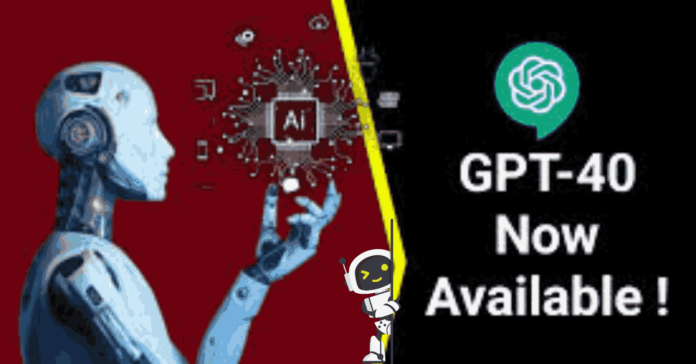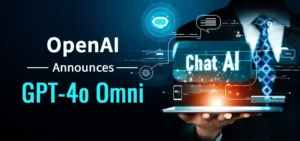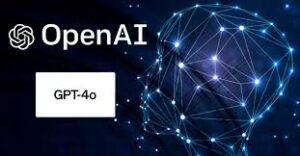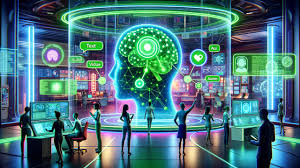OpenAI GPT-4o release has unleashed its newest powerhouse, (with the “o” stands for “Omni”). This groundbreaking model marks a major leap forward in natural human-computer interaction. Unlike its predecessors, GPT-4o can effortlessly understand and respond to information across audio, video, and text formats, generating real-time outputs in each medium.
This versatility is paired with impressive speed. For audio inputs, OpenAI GPT-4o release boasts a response time as low as 232 milliseconds, practically matching the pace of human conversation. It gives a seamless performance of GPT-4 Turbo than handling the English language and the code, and it goes beyond the boundaries by having non-English languages the best part of it is yet to be seen. GPT-4, the latest API, can operate at an astounding speed of 200% over its previous gen with an incredible 50% lower cost. This aspect as such has a very good stand as it proves an unbeatable choice for both developers and users looking for AI tools of the most recent kind.
What are the Key Features of OpenAI GPT-4o Release?
After introducing ChatGPT without signups, OpenAI’s latest model called GPT4o was announced on May 13th, 2024. It`s quite a big step for artificial languages to get rid of the barrier between the user and the device.OpenAI GPT-4o accepts input in any combination of text, audio, and image, and generates corresponding outputs. Notably, it can respond to audio inputs in as little as 232 milliseconds, similar to human conversation response time. The main features it offers include:
Realme Narzo 70 Pro 5G Specification, Price And Review [APRIL 2024]
iPhone 16 Pro Design Upgrade: Biggest Leaks Revealed!
- Omnimodal Reasoning: This is the most significant feature, allowing GPT-4o to understand and respond to information across different formats – audio, video, and text. It can analyze and generate outputs in each of these mediums.
- Real-Time Interaction: Unlike previous models, OpenAI GPT-4o boasts impressive speed. Particularly for audio inputs, it can respond in as little as 232 milliseconds, making conversations feel natural and fluid.
- Multilingual Proficiency: While maintaining strong performance on English text and code similar to GPT-4 Turbo, GPT-4o excels even further when handling languages other than English.
- Increased Speed: Within the API, GPT-4o operates at double the speed of its predecessor. This translates to faster processing and quicker results.
- Reduced Cost: Amazingly, OpenAI GPT-4o release claims to be available at a 50% lower cost compared to previous models. This makes it a more accessible and attractive option for developers and users.
What are Some Potential Applications of OpenAI GPT-4o?
Certainly! Here are some exciting applications for at OpeAI GPT-4o release:
- Virtual Assistants: Virtual Assistants: With GPT-4o, better and more contextually aware virtual assistants will be possible. These can be used in activities such as setting up schedules, solving questions, and offering custom recommendations.
- Content Creation: From minding the articles and blog posts to writing creative stories, GPT-4o can aid your creation process of perfect, appealing content.
- Multimodal Interfaces: OpenAI GPT-4 release claims to have a great capacity to process text, audio, and visual inputs for developing multimodal interfaces for applications such as online conferences, gaming, and augmented reality.
- Language Translation: OpenAI GPT-4 release offers multilingual capabilities. It may turn history for language translation services by allowing precise and place-specific translations across different languages.
- Healthcare: OpenAI GPT-4o release may help medical professionals by disease monitoring, examination, carrying out treatment, and summarizing research.
- Education: It can create personalized learning materials, answer student queries, and even generate interactive quizzes.
How does GPT-4o Handle Multimodal Inputs?
GPT-4o handles multimodal inputs by seamlessly integrating audio, vision, and text data. When presented with a combination of these modalities, it processes them jointly to generate relevant outputs. For instance:
- Audio-Text Interaction: If you feed both an audio clip and textual prompt to GPT-4o it can transcribe audio, represent the circumstances, and produce a logical response.
- Vision-Text Interaction: When given an image description or a visual prompt, GPT-4o can analyze the content and produce relevant text. For example, it can describe an image, generate captions, or answer questions related to visual content.
- Audio-Vision Interaction: Combining audio and visual inputs allows GPT-4o to perform tasks like lip reading, scene understanding, or generating audio descriptions for images.
Limitations of OpenAI GPT4o Release
Besides shooting video scenes, putting words together, and voice simulation, OpenAI’s GPT-4 seems to provide an integrated, convenient way to do all these. On one hand, it is a good sign of its potential, however, it is still in its initial stages. While GPT-4o can understand and respond to these different formats, some features, like audio outputs, are currently limited. Think of it as having a favorite voice for responses – versatility will likely come with future advancements.
The exciting part? OpenAI GPT-4o release paves the way for a more natural way to interact with computers. Imagine asking a question with a combination of text, showing a picture, and even adding a voice clip – GPT-4o aims to understand it all. Even more impressive, it can respond to audio prompts as quickly as humans converse, with response times as low as 232 milliseconds!
Conclusion
OpenAI GPT-4o release represents a significant leap in human-computer interaction. The omnichannel nature of AI communication, manifested through its capability to operate and respond to audio, video, and text stems along with its superfast and cheap rates, leaves many applications behind. This could be seen as the game changer technology that would revolutionize virtual assistants and content creation and as a tool that would foster equally educated multilingual communities, invest in healthcare and education, and many others.






